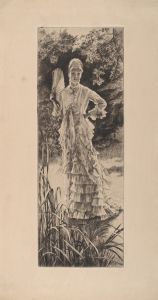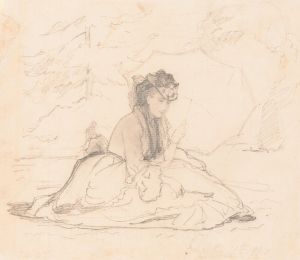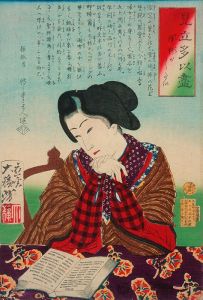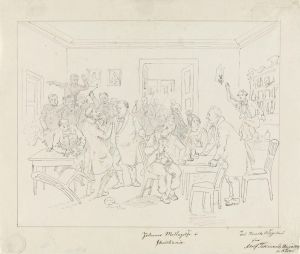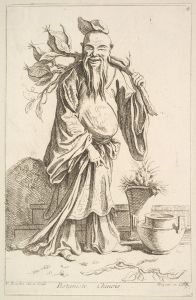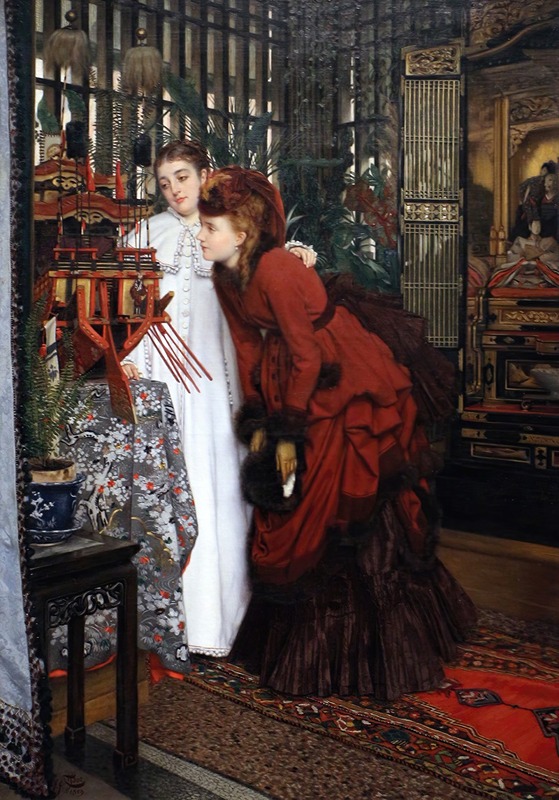
Young woman looking at Japanese items
A hand-painted replica of James Tissot’s masterpiece Young woman looking at Japanese items, meticulously crafted by professional artists to capture the true essence of the original. Each piece is created with museum-quality canvas and rare mineral pigments, carefully painted by experienced artists with delicate brushstrokes and rich, layered colors to perfectly recreate the texture of the original artwork. Unlike machine-printed reproductions, this hand-painted version brings the painting to life, infused with the artist’s emotions and skill in every stroke. Whether for personal collection or home decoration, it instantly elevates the artistic atmosphere of any space.
"Young Woman Looking at Japanese Items" is a painting by the French artist James Tissot, created in the late 19th century. James Tissot, born Jacques Joseph Tissot on October 15, 1836, in Nantes, France, was known for his detailed and fashionable depictions of contemporary life, particularly focusing on the social lives of women. Tissot's work often reflects the cultural exchanges and fascinations of his time, and this painting is no exception.
The painting captures a young woman engrossed in examining Japanese objects, a theme that reflects the Japonisme movement that swept through Europe during the late 19th century. Japonisme refers to the influence of Japanese art and design on Western culture, particularly after Japan opened its ports to trade with the West in the 1850s. This cultural exchange introduced European artists to Japanese prints, ceramics, textiles, and other decorative arts, which significantly influenced Western art and design.
In "Young Woman Looking at Japanese Items," Tissot portrays a scene that highlights this fascination with Japanese culture. The young woman in the painting is depicted in a richly detailed interior, surrounded by various Japanese artifacts. These items may include traditional Japanese ceramics, textiles, or other decorative objects, reflecting the Western interest in and collection of such items during this period.
Tissot's attention to detail is evident in the intricate rendering of both the woman's attire and the Japanese objects. The painting showcases Tissot's skill in capturing textures and patterns, a hallmark of his style. The woman's clothing is depicted with meticulous detail, emphasizing the fashion of the time, which often incorporated elements inspired by Eastern designs.
The composition of the painting draws the viewer's attention to the interaction between the woman and the Japanese items, suggesting a sense of curiosity and admiration. This interaction not only highlights the cultural exchange between East and West but also reflects the broader trends of globalization and the blending of artistic traditions during the 19th century.
James Tissot's work, including "Young Woman Looking at Japanese Items," is often celebrated for its ability to capture the nuances of contemporary life and the complexities of cultural interactions. His paintings provide a window into the social dynamics and aesthetic preferences of the Victorian era, making them valuable both as works of art and as historical documents.
Tissot's career spanned several decades, during which he achieved considerable success in both France and England. He was known for his portraits and genre scenes, which often featured women in fashionable attire, set against the backdrop of modern urban life. His work remains influential, offering insights into the cultural and artistic exchanges that characterized the 19th century.
In summary, "Young Woman Looking at Japanese Items" by James Tissot is a reflection of the Japonisme movement and the broader cultural interactions of the time. Through his detailed and thoughtful portrayal, Tissot captures a moment of cultural curiosity and appreciation, highlighting the enduring impact of Japanese art on Western aesthetics.








